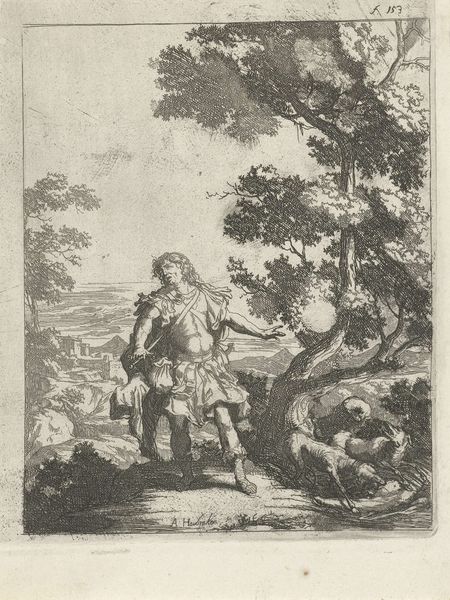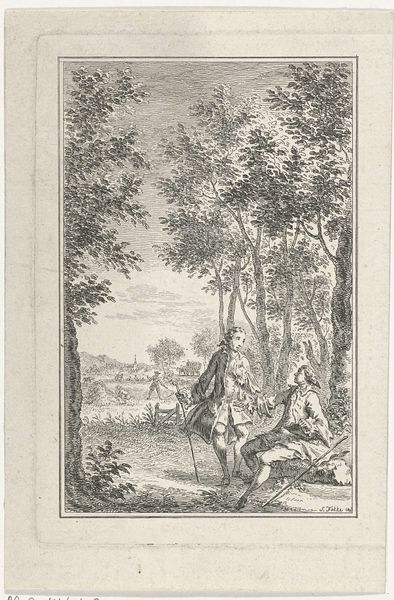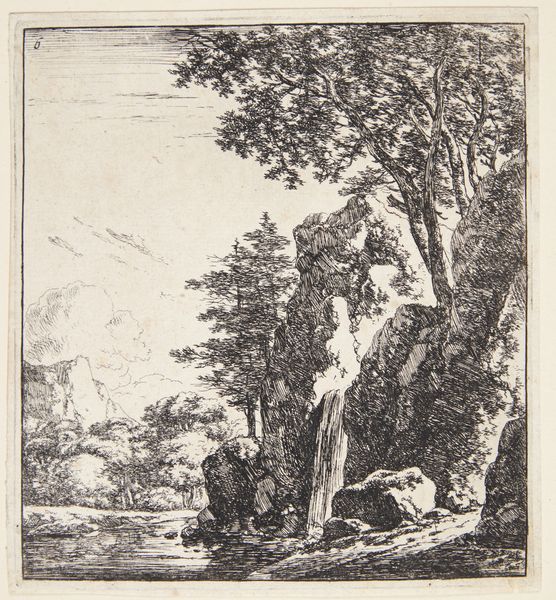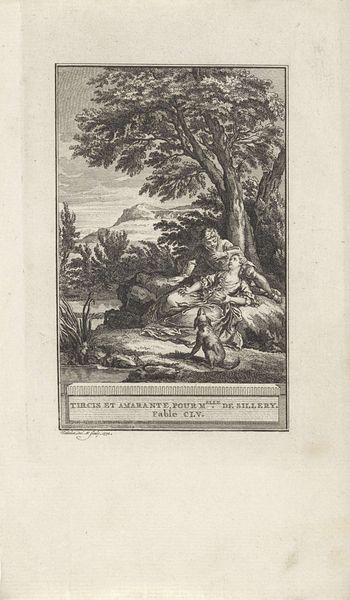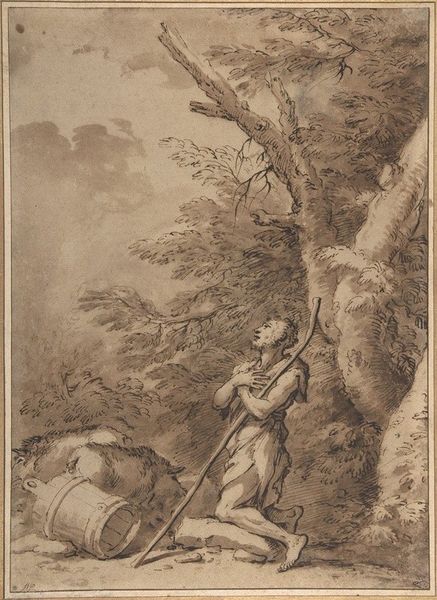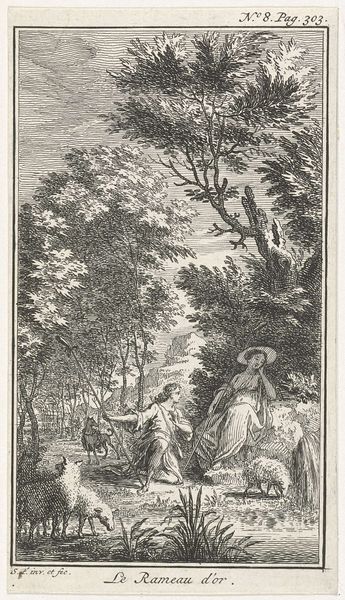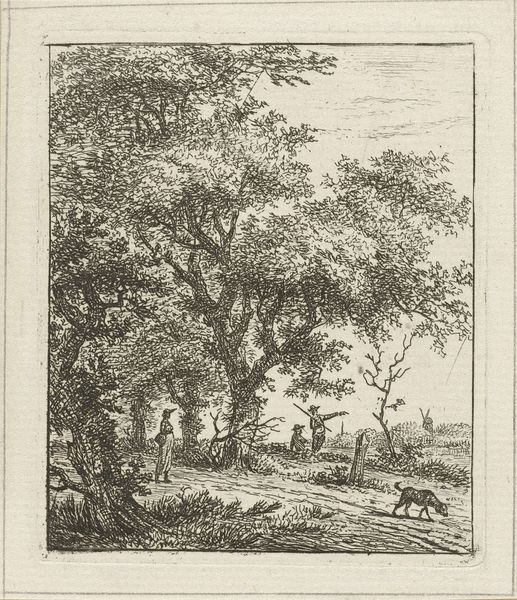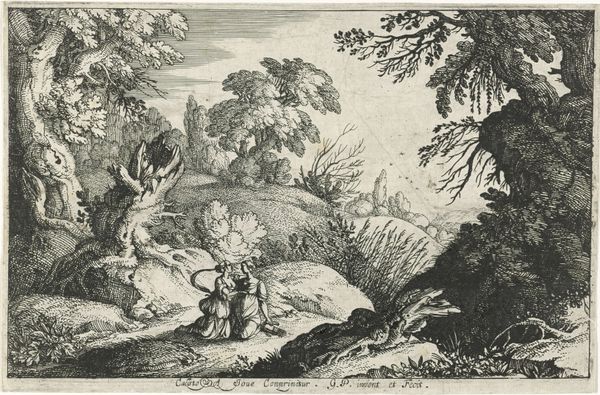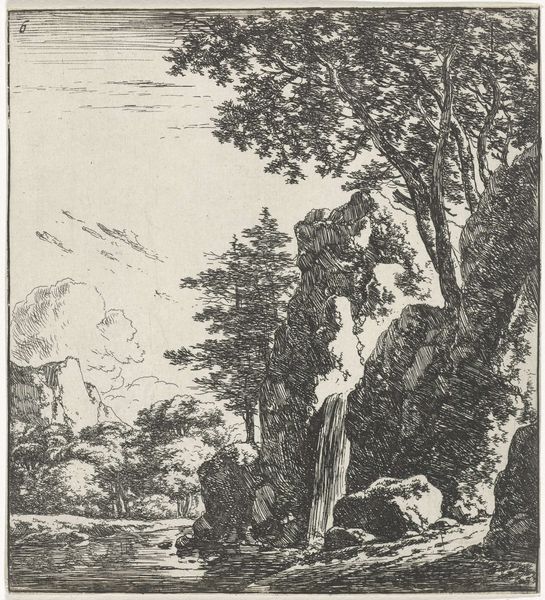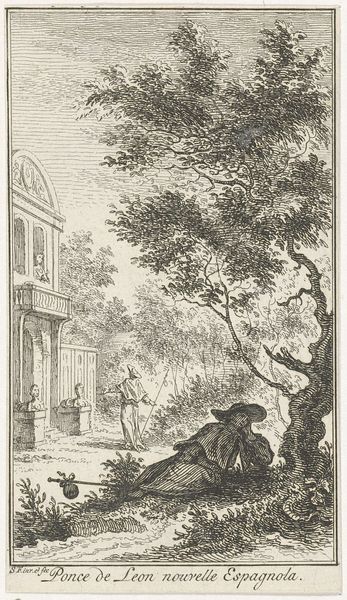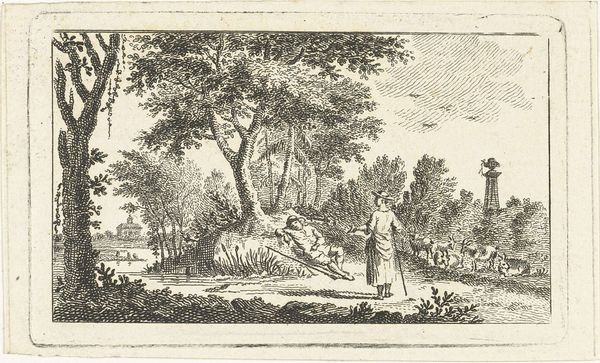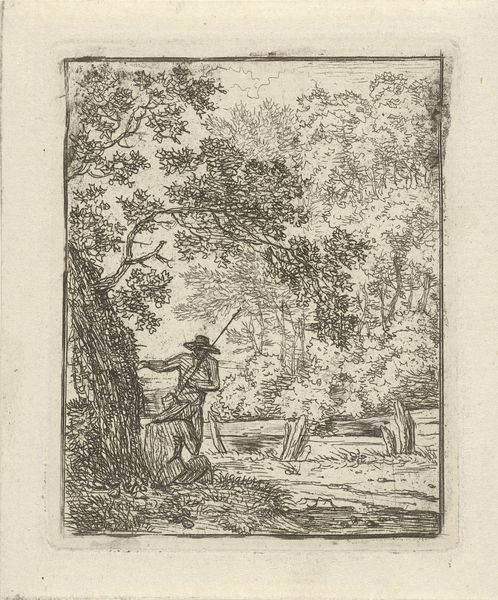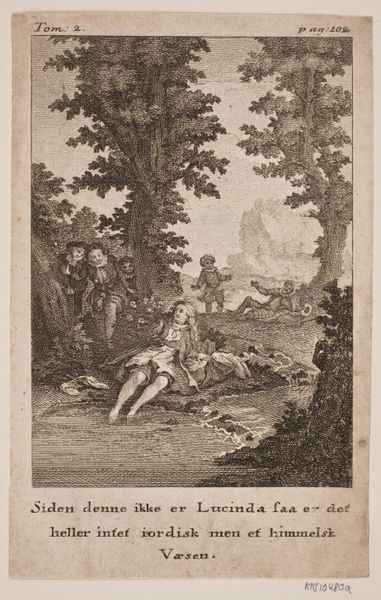
Dimensions: height 168 mm, width 96 mm
Copyright: Rijks Museum: Open Domain
Curator: Here we see "Telemachus Discovers Philocles in a Cave" by Simon Fokke, dating back to around 1775. It is currently held in the Rijksmuseum's collection and made with engraving techniques. What strikes you most about it? Editor: The lines are very intricate! A detailed landscape. But also, a somberness falls across the entire scene, even though it shows discovery. It seems quite tense. Curator: It is! Fokke has captured a key moment, an engraving produced during a period where interpretations of classical stories like those found in Homer’s “Odyssey” reflected anxieties related to governance, exile, and societal stability during a tumultuous era of enlightenment and impending revolutions. Philocles’s discovery highlights themes of banishment but also political resistance. Editor: Tell me about these characters because the narrative context makes me appreciate the placement of figures much more. Look at Telemachus; his theatrical gesture dominates, but Philocles, tucked away in the cave, is literally and figuratively marginalized. Curator: Exactly, this represents their power dynamics! Telemachus, searching for his father, encountering Philocles who embodies isolation. Engravings like these were extremely important visually for the 18th-century public because they acted as visual summaries of literature—which shapes political and ethical opinions on leadership through popular art. Editor: I noticed that the backdrop of foliage contrasts sharply with the delicate hatching of their faces and clothes. Are we seeing more value in line to demonstrate depth? It looks different from other landscape art made at that time. Curator: A great observation. Remember, engravings involve subtractive work directly onto a plate to control ink transfer in prints. Simon Fokke worked to generate textures and shadows as narrative enhancements in their storytelling through visual design and composition here. These details invite us into their dramatic world. Editor: Considering that, and recognizing what we discussed earlier, seeing those details with your contextual frame is making this print way more intense than when I began. The artist used visual art that translates this cultural idea into something physical you can hold with your hand—almost propaganda for morality. Curator: You’ve nailed it. That intersection is precisely what renders this historical piece of work as crucial in any cultural assessment of artwork production within social awareness!
Comments
No comments
Be the first to comment and join the conversation on the ultimate creative platform.
